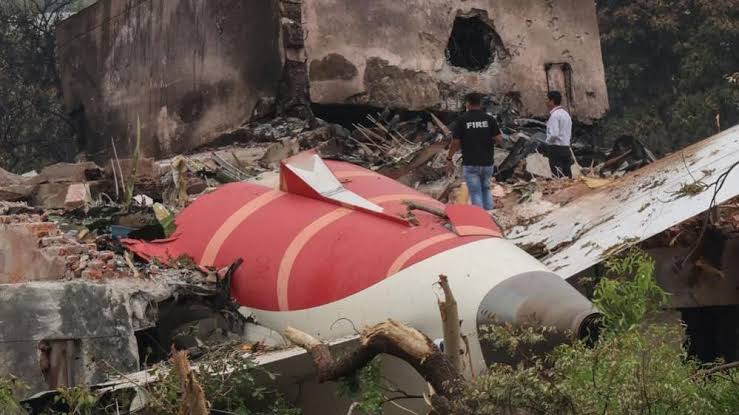An Air India Flight 171 bound for Gatwick Airport in London from Ahmedabad, Gujarat, crashed near Ahmedabad airport on Thursday. This tragic event is being considered one of the worst passenger aircraft accidents in India’s aviation history. The incident is even more shocking because the Boeing 787 Dreamliner involved in the crash is widely regarded as one of the safest aircraft in the world. The crash has left many aviation experts stunned.
So, what are the leading theories behind the crash of this Air India aircraft? What do aviation experts have to say about these possibilities? Here’s a detailed look:
Theory 1: Aircraft Failed to Reach Required Altitude – Were the Thrusters Not Working?
Just after takeoff, the pilots in the cockpit issued a “Mayday” call. According to India’s aviation regulator, DGCA, no further communication was received from the aircraft after the distress call. It’s still unclear why the call was made.
The sole survivor of the crash, Ramesh Biswas Kumar, reported that the aircraft struggled to gain altitude and that he heard a loud explosion during the attempt.
The aircraft climbed to 625 feet (approximately 190 meters) before it began descending rapidly. It then crashed among trees and buildings, eventually bursting into flames.
Experts say that while the takeoff was technically successful, the plane was unable to climb much further. Initial reports suggest that the aircraft failed to generate the necessary thrust after takeoff, which might have caused the crash.
Also Read-: Air India Plane Crash: Boeing 787 Dreamliner Price and Past Controversies
Theory 2: Did Engine Failure Cause the Crash?
Since the aircraft managed to reach 625 feet before falling, some suspect that both engines may have failed. Aviation experts suggest that loss of power in both engines could be a contributing factor to the crash.
If the engines shut down at 625 feet, it would be a first for Boeing’s Dreamliner series, known for its advanced safety systems. Notably, the two engines on a Dreamliner function as independent units. If one fails, the other can usually sustain the aircraft and allow for a safe landing.
According to Professor Richard Curran of the University of London (Sustainable Aviation), simultaneous engine failure is extremely rare. Any signs of engine underperformance usually alert the pilots early, allowing them to take precautionary steps.
However, Professor John McDermid from York University believes that the problem occurred very quickly after takeoff and might have been too severe to avoid a crash. Aircraft engineer Ahmed Busnaina added that if an engine fails at 10,000 or 20,000 feet, the impact is usually manageable. But failure during takeoff or shortly after reaching low altitude can cause sudden thrust loss, making recovery very difficult for the pilots.
Also Read-: Air India Flight Crash, 265 People Declared Dead — Major Updates on Ahmedabad Plane Crash
Theory 3: Was the Crash Caused by Weather Conditions?
There are also speculations that weather might have played a role in the incident. On the day of the crash, Ahmedabad recorded a temperature of around 40°C, raising concerns about potential engine overheating.
However, Professor Paul Williams, an atmospheric science expert at the University of Reading, told The Independent that the weather on June 12 was ideal for flying. He stated that it was dry and sunny with good visibility and light winds from the west—perfect conditions for takeoff.
He added that turbulence was unlikely due to the calm wind patterns, and that aircraft engines are built to withstand extreme heat up to 2000°C, far beyond the ambient air temperature. Therefore, the engine overheating theory seems improbable based on current evidence.
As investigations continue, aviation authorities and experts are examining these and other possibilities to determine the exact cause behind this tragic crash.


